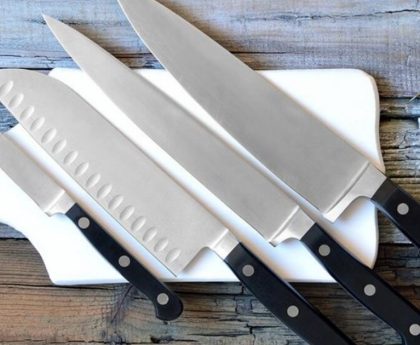Refreshing your living space just became a whole lot more exciting! Textured recycled wall art is a fantastic way to inject a personal touch into your room, giving it a unique flair that sets it apart. And the best part? It’s not only budget-friendly but also incredibly satisfying to create.
Easy DIY Techniques for Awesome Textured Art
Let’s dive into the exciting world of DIY textured canvas art with ten super-accessible techniques to bring your artistic vision to life:
Technique #1 – Painting with a Palette Knife
Picture yourself painting with a palette knife, effortlessly creating rich textures and intricate designs. Here’s how you can make it happen:
-
Gear Up: Start by selecting a sturdy palette knife and a palette of vibrant paint colors that inspire you.
-
Go Thick: Apply thick layers of paint onto your canvas using the palette knife. Don’t hold back—this is your chance to experiment with different colors and textures.
-
Scrape and Swipe: Use the palette knife to scrape, swipe, and manipulate the paint in various directions. This technique allows you to create unique textures and patterns that reflect your artistic style.
-
Have Fun: Let your creativity flow freely! There are no rules when it comes to painting with a palette knife, so embrace spontaneity and enjoy the process of bringing your imagination to life.
Technique #2 – Stenciling
Stenciling offers a simple yet effective way to add intricate patterns and designs to your artwork. Here’s how you can do it:
-
Pick Your Stencil: Choose a stencil design that resonates with your artistic vision. Whether it’s geometric shapes, floral patterns, or intricate motifs, select a stencil that sparks your creativity.
-
Secure the Stencil: Position the stencil onto your canvas and secure it in place using painter’s tape or adhesive spray. Ensure that the stencil lies flat against the surface to prevent any paint from seeping underneath.
-
Apply Paint: Use a brush or sponge to apply paint over the stencil, using a dabbing or stippling motion. Make sure to evenly distribute the paint to achieve crisp and clean lines.
-
Peel Off the Stencil: Carefully remove the stencil from the canvas to reveal the intricate design beneath. Take your time and peel off the stencil slowly to avoid smudging or smearing the paint.
Technique #3 – Incorporating Sand
Adding sand to your paint creates a tactile surface that adds an extra dimension to your artwork. Here’s how you can incorporate sand into your textured canvas art:
-
Gather Your Materials: Collect your paint, sand, palette knife, and canvas. Choose a color scheme that complements the texture you wish to achieve.
-
Mix Sand with Paint: In a separate container, mix a small amount of sand with your chosen paint color. Adjust the ratio of sand to paint based on the level of texture you desire.
-
Apply Sand-Infused Paint: Use a brush or palette knife to apply the sand-infused paint onto your canvas. Spread the paint evenly, ensuring full coverage of the surface.
-
Manipulate the Texture: Once the paint is applied, use the palette knife to manipulate the texture by scraping, dragging, or dabbing the paint in various directions. Experiment with different techniques to create unique patterns and textures.
-
Allow to Dry: Allow the textured canvas to dry completely before displaying or further embellishing it. Depending on the thickness of the paint and sand mixture, drying times may vary.
Technique #4 – Making a Collage
Creating a collage on your canvas is a fun and versatile way to add texture and visual interest to your artwork. Here’s how you can make a collage:
-
Gather Your Materials: Collect an assortment of materials such as fabric scraps, paper cutouts, dried leaves, twigs, and any other items that inspire you. Consider the theme or mood you want to convey in your collage.
-
Prepare Your Canvas: Start with a blank canvas or a pre-primed canvas board. If necessary, apply a thin layer of gesso to create a smooth, uniform surface for adhering your collage materials.
-
Arrange Your Collage Elements: Experiment with different arrangements and compositions until you find a layout that appeals to you. Play with color, texture, and scale to create visual interest and depth.
-
Adhere the Materials: Once you’re satisfied with the arrangement, begin adhering the collage elements to the canvas using a suitable adhesive such as glue, gel medium, or Mod Podge. Apply the adhesive evenly to the back of each material, then press firmly onto the canvas.
-
Layer and Build: Continue layering and building up your collage, adding depth and dimension with each new element. Overlap materials, tuck in edges, and create focal points to guide the viewer’s eye across the composition.
-
Finish It Off: Once the adhesive has dried completely, inspect your collage for any loose or uneven edges. Trim or secure any loose elements as needed. Consider adding additional embellishments such as paint, ink, or embroidery to enhance the overall aesthetic.
Technique #5 – Using a Textured Roller
Rolling paint onto your canvas with a textured roller is a simple yet effective way to create mesmerizing patterns and designs. Here’s how you can use a textured roller:
-
Select Your Textured Roller: Choose a textured roller with a pattern that resonates with your artistic vision. Whether you prefer geometric shapes, floral motifs, or abstract designs, select a roller that aligns with your desired aesthetic.
-
Prepare Your Canvas: Begin with a primed canvas or canvas board. Ensure that the surface is clean and free of any dust or debris that may interfere with the rolling process.
-
Apply Paint to the Roller: Load the textured roller with your chosen paint color. Make sure to evenly coat the roller to ensure consistent coverage on the canvas.
-
Roll the Paint onto the Canvas: Starting from one edge of the canvas, gently roll the textured roller across the surface, applying even pressure as you go. Continue rolling until the entire canvas is covered with the desired pattern.
-
Overlap for Continuity: To create a seamless pattern, overlap each pass of the roller slightly with the previous one. This will ensure that the pattern flows smoothly across the canvas without any breaks or gaps.
-
Experiment and Customize: Don’t be afraid to experiment with different colors, textures, and roller patterns to create unique effects. Mix and match rollers to create intricate designs and add visual interest to your artwork.
Conclusion
Making textured recycled wall art is like leveling up your room decor game. Whether you’re a total newbie or a seasoned DIY pro, these techniques are easy to master and guaranteed to make your space look awesome. So grab your paintbrushes, get messy, and let your creativity run wild!





